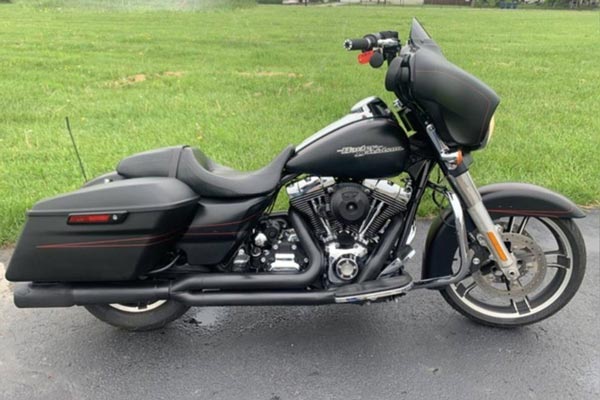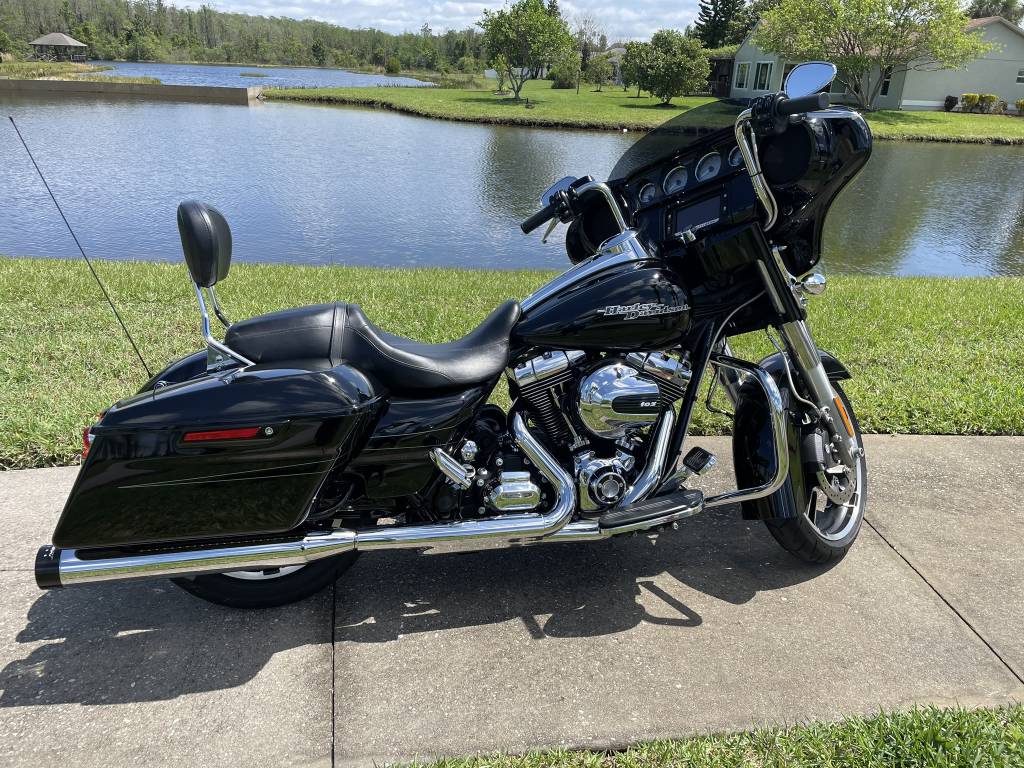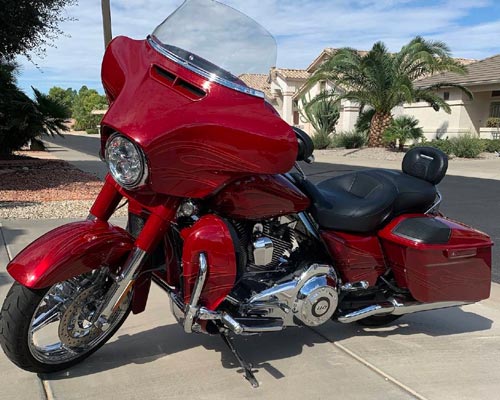Harley Davidson released the first Street Glide (FLHX) in 1984. Today, the Street Glides are available in many variants, including the FLHXS, FLHXSE, and FLHXXX. Besides being the best for long-distance riding, these bikes offer excellent rider comfort and are easy to customize.
So then, are there any Street Glide years to avoid? Yes. Despite their reliable performance, you should avoid the 2014, 2015, 2016, 2017 and 2018 Street Glides. These model years have had several problems and recall due to a faulty clutch, engine failure, and oil leak.
Wait, it doesn’t stop there! In this blog post, we will cover everything there is to know about Street Glide’s everyday issues and which years to avoid.
Which Street Glide Years To Avoid?- Here’s the Answer with an Explanation
While most HD Street Glides come with issues, some model years are worse than others regarding reliability. Below is a detailed list of the various street glide years you must avoid and why.
Street Glide 2014 and 2015 Years
These two Street Glide years have had a fair share of their own issues. Let’s find out what makes them the worst years to avoid.
Faulty Saddlebag Mounts
In 2015, Harley Davidson recalled over 185,000 bikes in the U.S. alone because of faulty saddlebag mounts. Besides the Harley Davidson Street 500 Problems, the 2014 and 2015 Street Glides, including the FLHX, FLHXS, and FLHXSE models, were also recalled.

According to the NHTSA service bulletin, the saddlebag retaining receptacle may fail. Consequently, the mounting stud may disengage from the plate, and the saddlebag could come loose and fall off. This may happen while the bike is in motion, causing a potential hazard for other motorists.
Harley Davidson provided new receptacles with the kit to fix this problem. Here is a video of how to replace the saddlebag mounts:
Rough Idle and Stalling
2014 Street Glides with the newly stocked 255 cams are prone to running rough. This happens, especially after the engine has reached operating temperatures.
Besides running idle, you may hear clattering noises from the primary case, and the engine may stall. Also, the bike may rev between 1200 to below 900 before eventually stalling. Generally, this issue occurs due to a bad cam chain tensioner.
Buffeting
With both the 2014 and 2015 Street Glide years, you may experience head buffeting. Buffeting is the wind turbulence pressure you experience around your helmet, body, windscreen, and clothing. This mostly happens when riding your bike at highway speeds.

One way to fix this problem is to install wind deflectors between the forks and your batwing. You could also install an HD windshield or lower the fork wind deflectors. Alternatively, you could use fork fangs.
2016 Model Years
So far, there has been one recall of some 2016 Street Glide models. Following are the issues these models have, making them one of the worst years to avoid.
Defective Clutch Master Cylinders
A recall was issued for this problem. The issue affects 2016 Street Glide (FLHX), Street Glide Special (FLHXS), and CVO Street Glide (FLHXSE) models.
Based on a report by the NHTSA, the clutch of these Street Glides may fail to disengage after parking your bike for extended periods. This happens due to the hydraulic clutch system failing to generate adequate lift.

If this condition is not fixed, your bike may lose control. Also, you may experience free play in the clutch lever.
According to Harley Davidson, the solution to this problem is flushing the clutch master cylinder using a wash solution. The clutch master cylinder should also be rebuilt using the recall kit provided by the manufacturer.
3rd Gear Slipping
Sometimes, your bike may feel like it is skipping a tooth on the belt but only when in third gear. This issue occurs especially under wide-open throttle and feels almost like a belt slipping.
However, the problem may occur even when the shift fork and belt are in good condition with proper tension. Also, it may persist even after installing a new clutch.
Typically, the primary cause of this issue is the dog teeth getting rounded, reducing their locking quality.
Engine Failure
Engine failure is shared among the 2016 Street Glide CVO models with the 110-twin cooled engine. This issue may occur while your bike is under 35k miles, even after changing the oil every 2500 miles.
But as it turns out, the 110-twin cooled engine is well known for this failure. So, the fix is replacing the tappets and lifters every 20,000 miles.
2017 and 2018 Years
The 2017 and 2018 Street Glide years are also worth avoiding for the following reasons:
Faulty Secondary Clutch Actuator Cylinder
In November 2018, Harley Davidson recalled about 177,636 bikes because of a defective secondary clutch actuator cylinder. According to the NHTSA, the cylinder may internally leak fluid.
And if the leak persists, the hydraulic clutch may fail to generate the sufficient lift needed to disengage the clutch. Consequently, your bike may lose control, increasing the crash risk.
Typically, this issue is common among 2017 and 2018 Street Glide models, including the FLHXS, FLHXSE, and 115th Anniversary Street Glide. To fix this problem, HD provided a recall kit with a new secondary actuator piston.
Incorrectly Installed Oil Line Clamp
So far, there has been one recall on certain 2017 Street Glides and Street Glides Special models. This recall involved approximately 57,000 bikes, including other HD models.
The primary reason for the recall was that the oil line could easily loosen up. Eventually, the oil would be spewed around the path of your bike’s rear tire, creating a slippery surface and leading to a crash.
This would happen due to the clamps on the oil cooler lines being installed incorrectly.
Overview of Common Issues With Street Glides
Whether you have 1984, 2013, or 2022 HD street glides, these motorcycles are prone to various issues. The followings are the some of common issues from all model years of Street Glides.
Stiff Clutch Lever
With the 2013 Harley Street Glide, there have been complaints about the clutch being stiff and tight. It may feel like a forearm workout when adjusting it. Sometimes, the clutch lever may feel relatively loose, with more play than usual.
Oil Sumping Issue
Another problem you may encounter with your Street Glide is the oil getting trapped in the crankcase. This means the oil does not get back into the oil pan as it should. When this happens, your bike may suddenly go into a shutdown mode.
Bad Battery
With 2006, 2008, and 2020 Street Glides, you may experience battery issues even when the bike is less than a year old. Typically, the battery may die when you let it sit for a few days or weeks. And when this happens, it may throw Harley Code p0562, a sign that the voltage regulator is faulty.
Clutch Failure
This issue is familiar to the 2017 and 2018 Street Glides. With the 2017 street glides, the hydraulic clutch may slip. This can be fixed by adjusting the clutch basket. However, with the 2018 Street Glide, the clutch may fail to disengage.
Defective Oil Cooler
The oil cooler of street glides may easily crack, causing the coolant to leak from the engine. This mostly happens due to road vibrations or when you hit something as big as a raccoon. Typically, this is common with the 2013 Street Glide.
Warped Rotors
With the 2011 to 2013 Street Glides, the front rotors are highly prone to warping. This may occur when your bike has only 700, 3000, 10,000, or 12,000 miles.
FAQs
In this section, we will respond to commonly asked questions regarding which street glide years to avoid. Check them out.
Should I avoid the 2013 Harley Davidson Street Glide Years?
No. While the 2013 Street Glides have some problems, they are reliable. These year models boast a six-speed transmission that provides smooth and quiet shifting.
Which are the best Street Glide years?
Most people swear by 2009 to 2013 street glides, while others go with the 2019 and 2020 model years. But overall, the 2020 Street Glides are the best. These years have all the updates, and the sumping issue has been fixed.
Are the 2010 Street Glides model years worth avoiding?
No. The 2010 Street Glides are good bikes thanks to their twin-cam 1584cc engine, capable of comfortably cruising at 80mph. These bikes are also fuel-injected, ensuring crisp response and starting either cold or hot.
Conclusion
Street Glides are susceptible to various issues, including oil sumping, clutch failure, bad batteries, and defective oil coolers. However, some model years have more recurring problems than others. For this reason, you should avoid certain Street Glide years, such as 2014, 2015, 2016, 2017 and 2018.
So, if you want to buy a Street Glide bike, consider the 2009-2013 model years. 2019 Street Glides or later models are also a good buy, whether new or used. However, if you are on a budget, consider buying a used bike in good condition and with low mileage of under 10,000 miles.
